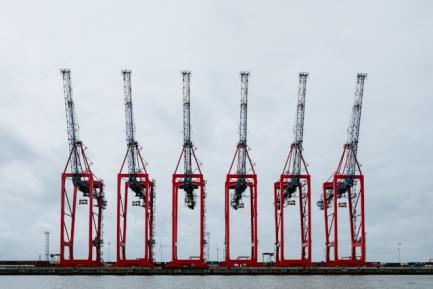Quo vadis, consumption?
• The revision of the historical series by the National Statistics Institute shows that private consumption in Spain grew below previous estimates in 2018 and the first half of 2019.
• This lower growth was initially due to a slowdown in the consumption of semi-durable and non-durable goods, followed by a second phase driven by the durable goods component.
• The slowdown in foreign tourist expenditure, coupled with domestic tourist expenditure by residents being replaced with spending abroad, could explain the slowdown in the consumption in semi-durable and non-durable goods, while uncertainty over the purchase of vehicles could explain the behaviour of the durable goods component.
In September, the National Statistics Institute (NSI) revised the historical series of the national accounts. In light of this review, we learned that private consumption growth was more moderate than previously thought, both in 2018 and in the first half of 2019. More specifically, private consumption grew by 0.5 pps below previously estimated in 2018 and by 0.7 pps less in the first half of 2019 (see first chart).1 In this article, we analyse the motives behind this slowdown.
The second chart shows the year-on-year growth in household consumption, together with the contributions from the consumption of durable goods and that of semi-durable and non-durable goods.2 We can draw three conclusions from the chart:
• Private consumption grew significantly up until Q4 2017 and has slowed sharply since then.
• The initial phase of the slowdown (between Q4 2017 and Q3 2018) can be mostly explained by the slowdown in the «Semi-durable and non-durable goods» component.
• The final phase of the slowdown (between Q4 2018 and Q2 2019) is down to the slowdown in spending on durable goods.
The quarterly breakdown of household consumption expenditure provided by the NSI does not allow for a more detailed analysis of each subgroup. Nevertheless, the NSI provides us with a greater level of detail in the annual national accounts, which include data up to 2018. This greater level of detail enables us to understand which categories are leading the slowdown in semi-durable and non-durable goods which we observe in 2018.
As shown in the third chart, practically all of the slowdown observed between 2017 and 2018 can be explained by the «Hotels, cafés and restaurants» component and, to a lesser extent, that of «Transport and communications».3
How can we interpret the data provided by these two charts? The data shown in the third chart include expenditure by foreigners in Spain and do not take into account the possibility of Spanish residents replacing domestic tourist expenditure with tourist expenditure abroad. As such, the decline in the contribution of the «Hotels, cafés and restaurants» component in 2018 could either be due to foreigners spending less on this component compared to in 2017, due to residents spending less as they have spent more abroad, or due to a combination of both. Well, between 2017 and 2018, growth in expenditure by foreign tourists in Spain slowed from 12.1% to 4.1%. Also, over the same period, the growth of tourist expenditure abroad by Spanish residents accelerated from 7.2% to 12.6%. The slowdown in tourist spending by foreigners, together with the significant growth in residents’ expenditure on tourist services abroad, suggest that a combination of both factors could explain the behaviour of this category, at least in part.
The decline in expenditure on durable goods that can be seen towards the end of 2018 and in the first half of 2019, meanwhile, could be the product of uncertainty surrounding the automotive sector.4 That is, faced with greater regulatory uncertainty threatening the sector5 and the challenge of technological change (combustion engines vs. electric propulsion), consumers may have decided to postpone their spending plans until these unknowns have cleared. If this is the case, one might expect that if these uncertainties dissipate in the future, spending on vehicles will experience a rebound effect due to the pent-up consumption that is currently accumulating.
Oriol Carreras
1. The latest data on the national accounts from the NSI show that consumption rebounded in Q3, placing the average growth rate of consumption for the first three quarters of the year at 1.1%.
2. Durable goods are those which, once acquired, can be used repeatedly over time. They include products such as furniture, household appliances, cars and audio-visual equipment.
3. This latter category excludes subcomponents such as the purchase of vehicles, since they fall within the durable goods category.
4. The NSI data in the second chart does not allow us to see whether the fall in the contribution of the durable goods component is due to car sales or other categories. Nevertheless, indicators such as vehicle registrations, which show an average year-on-year decline of around 7.0% between Q3 2018 and Q2 2019, suggest that cars are at least partly responsible for this decline.
5. Uncertainty regarding taxation or possible restrictions on the movement of combustion vehicles.






